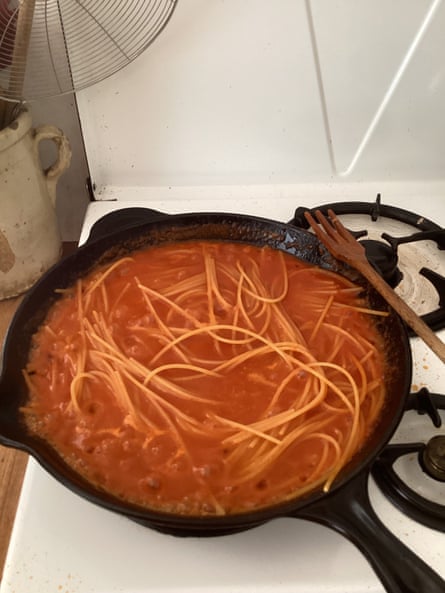The origin story – the specific episode or exact moment when someone decides to make something for the first time: an apple fell on my head, so I made a crumble; I burned the pasta, but everybody loved it; the tale of the margherita, a pizza for a queen… I love such stories, yet find them a nightmare, too.
On the one hand, even when fanciful, they recognise a set of circumstances or a person – credit where credit’s due, etc. On the other, in being recognised, these stories and, therefore the recipes, get trapped, often becoming the very opposite of what they once were – a happy accident of resourceful cooking, a record of when someone improvised and made something good. Take Enzo Francavilla, for example. A young chef from a town called Foggia, he moved to Bari in the early 1960s and worked in various places before taking over a joint called Al Sorso Preferito. In a long interview with the journalist and historian Sandro Romano, Francavilla explains that, one night, a couple from northern Italy asked for something good and substantial to eat. “So I invented a plate of spaghetti with a tomato sauce and a generous dose of chilli, prepared directly in the iron pan, making the sauce tighten well and thus creating a tasty external crust.” “Sei un assassino” (“you are a killer”) was the customer’s response and a dish was born.
Though the inventor is still Francavilla, Nicholas Antonacci’s telling is different. Antonacci worked for Francavilla and his wife, and recalls that, at the time, Al Sorso Preferito served mostly cold cuts, cheese and wine, but that, after requests from regulars, they started serving a couple of hot dishes, including spaghetti all’arrabbiata with tomato and a fiery amount of chilli. Over time, and thanks to the kitchen’s well-seasoned iron pans, the spaghetti often ended up with a crust, which was appreciated and requested. Fiery became a killer, and an improvised dish became a habit.

I love these slightly different stories, because they celebrate Francavilla and the city of Bari, and also remind me that stories and recipes are like sauce in a pan: they move differently in each telling and in each pair of hands. A recipe is advice, but also an invitation. That said, to move freely, a starting point is required. In this case, risottatura, borrowed from risotto, an absorption technique that takes place directly in the pan, with water (or other liquid) added little by little to the initially dry pasta and mixed until absorbed. By the end, the pasta should be cooked through and, thanks to the reduction and starch from the pasta, the small amount of sauce is dense and tasty.
Spaghetti all’assassina goes one (large) step beyond risottatura, because, during the last minutes of cooking, the spaghetti is actively encouraged to catch and burn. As The Puglia Guys note on their excellent blog, all’assassina must be burnt, crispy and fiery. Meanwhile, Romano notes, “The final result is the right creaminess combined with the crunchiness of the scorched surface.” I also received some great advice in the kitchen of a sports bar called Groove in Matera (whose own late-night spaghetti all’assassina is awesome): namely that, in order to recognise when the spaghetti has caught, you must listen to the pan as you would a good story.
Spaghetti all’assassina, or scorched spaghetti with tomato and chilli
Serves 4
6 tbsp olive oil
2 garlic cloves, peeled and finely sliced
1-2 tsp dried red chilli, crumbled
500ml tomato passata, milled tomatoes or smooth tomato sauce
500g spaghetti
Bring 500ml lightly salted water to a boil in a large saucepan.
Use a frying pan large enough to accommodate whole lengths of spaghetti – a cast- iron one would be ideal. Add the oil, garlic, chilli and tomato, and put on a medium heat. Once the sauce is bubbling vigorously, add the spaghetti, allowing it to spread into the sauce (it won’t be a single layer, but almost), then ladle in a third of the boiling water and turn up the heat. Now begins the process of observational cooking: use a spoon to move the spaghetti around as it simmers vigorously in the sauce – this will get easier as it softens and curves – and add more boiling water as needed.
Keep an eye on the time, because this method takes a bit longer than the standard cooking time on the packet, so taste. One the pasta is cooked but still has some bite, and the sauce is tight, start the process of toasting: allow the pasta to catch on the pan, and even some parts to burn while others turn golden crisp, but keep moving the spaghetti around so all these parts are evenly distributed. The final consistency should be quite dry, but not parched. Serve immediately.
Stay connected with us on social media platform for instant update click here to join our Twitter, & Facebook
We are now on Telegram. Click here to join our channel (@TechiUpdate) and stay updated with the latest Technology headlines.
For all the latest Lifestyle News Click Here
